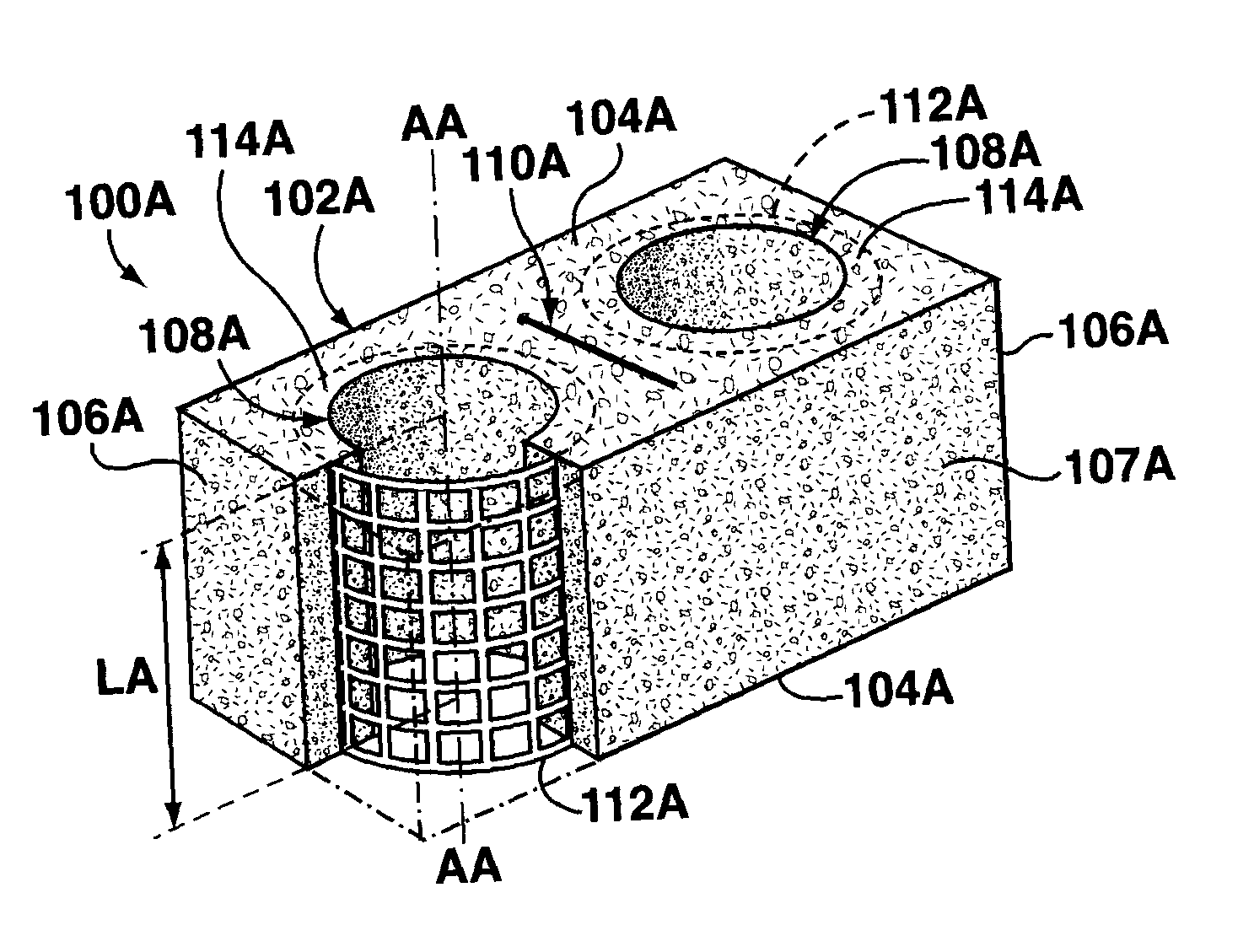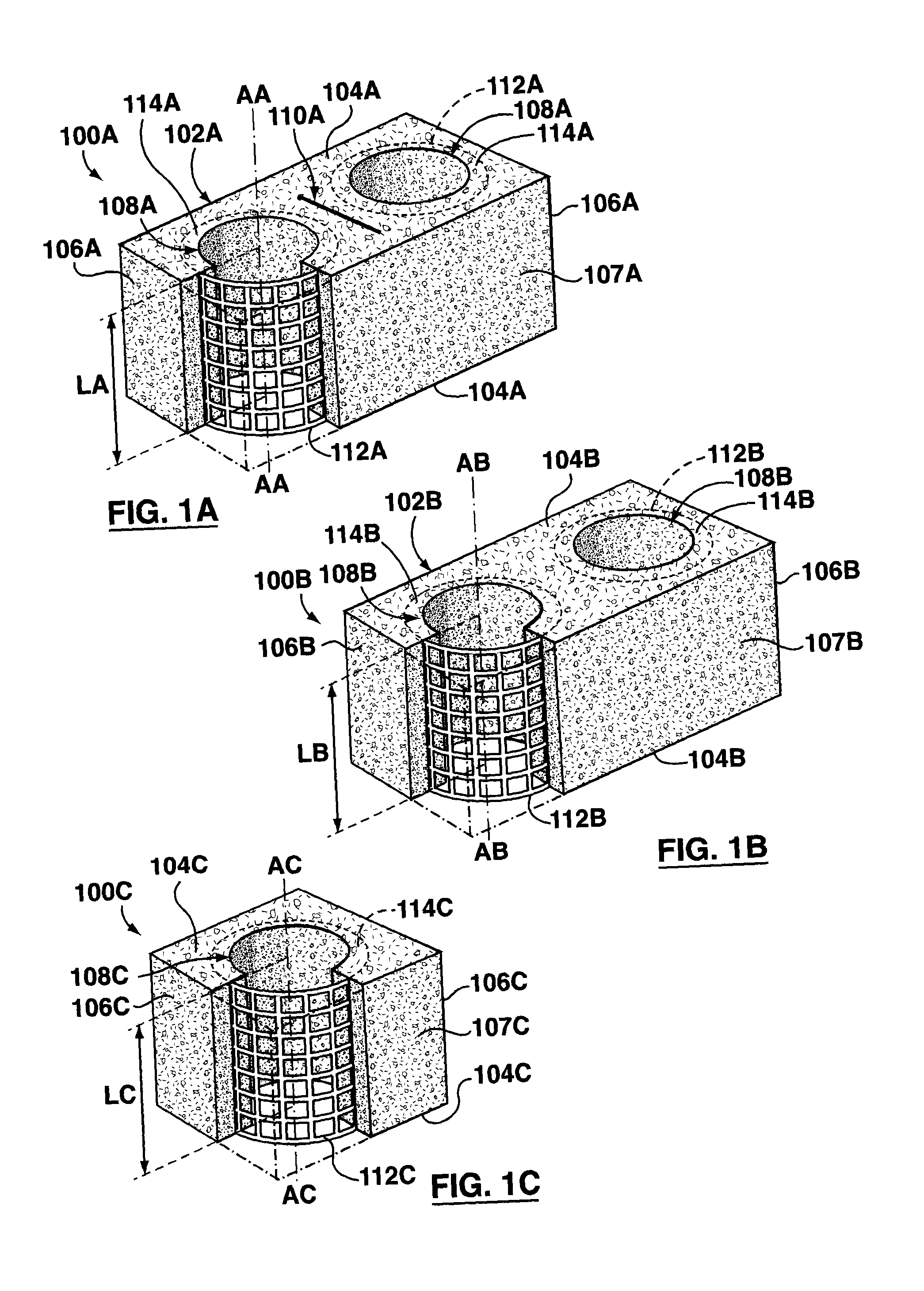Self-reinforced masonry blocks, walls made from self-reinforced masonry blocks, and method for making self-reinforced masonry blocks
a self-reinforced masonry and wall technology, applied in the field of self-reinforced masonry blocks, can solve the problems of difficulty in achieving sufficient ductility and energy dissipation, limited ductility, and often inconvenient construction of reinforced concrete blocks
- Summary
- Abstract
- Description
- Claims
- Application Information
AI Technical Summary
Benefits of technology
Problems solved by technology
Method used
Image
Examples
Embodiment Construction
[0045]Reference is now made to FIG. 1A, which shows an exemplary self-reinforced masonry block 100A according to an aspect of the present invention. The masonry block 100A comprises a main body 102A having opposed substantially parallel stacking surfaces 104A. The main body 102A of the illustrated masonry block 102A is formed from concrete. In the illustrated embodiment the main body 102A is parallepipedic, and hence also has flat ends 106A that are architecturally suitable for use at the ends of walls, where the highest compressive stresses occur in shear walls during a seismic event, and flat side walls 107A. The exemplary masonry block 100A in FIG. 1A has dimensions of 190×190×390 mm
(758×758×1558
inches) and has the same external size and shape as, and is therefore compatible with, standard conventional concrete blocks of the same dimensions. Other suitable shapes and sizes may also be used for self-reinforced masonry blocks according to aspects of the present invention. A pair of...
PUM
| Property | Measurement | Unit |
|---|---|---|
| diameter | aaaaa | aaaaa |
| diameter | aaaaa | aaaaa |
| Poisson's Ratio | aaaaa | aaaaa |
Abstract
Description
Claims
Application Information
 Login to View More
Login to View More - R&D
- Intellectual Property
- Life Sciences
- Materials
- Tech Scout
- Unparalleled Data Quality
- Higher Quality Content
- 60% Fewer Hallucinations
Browse by: Latest US Patents, China's latest patents, Technical Efficacy Thesaurus, Application Domain, Technology Topic, Popular Technical Reports.
© 2025 PatSnap. All rights reserved.Legal|Privacy policy|Modern Slavery Act Transparency Statement|Sitemap|About US| Contact US: help@patsnap.com



